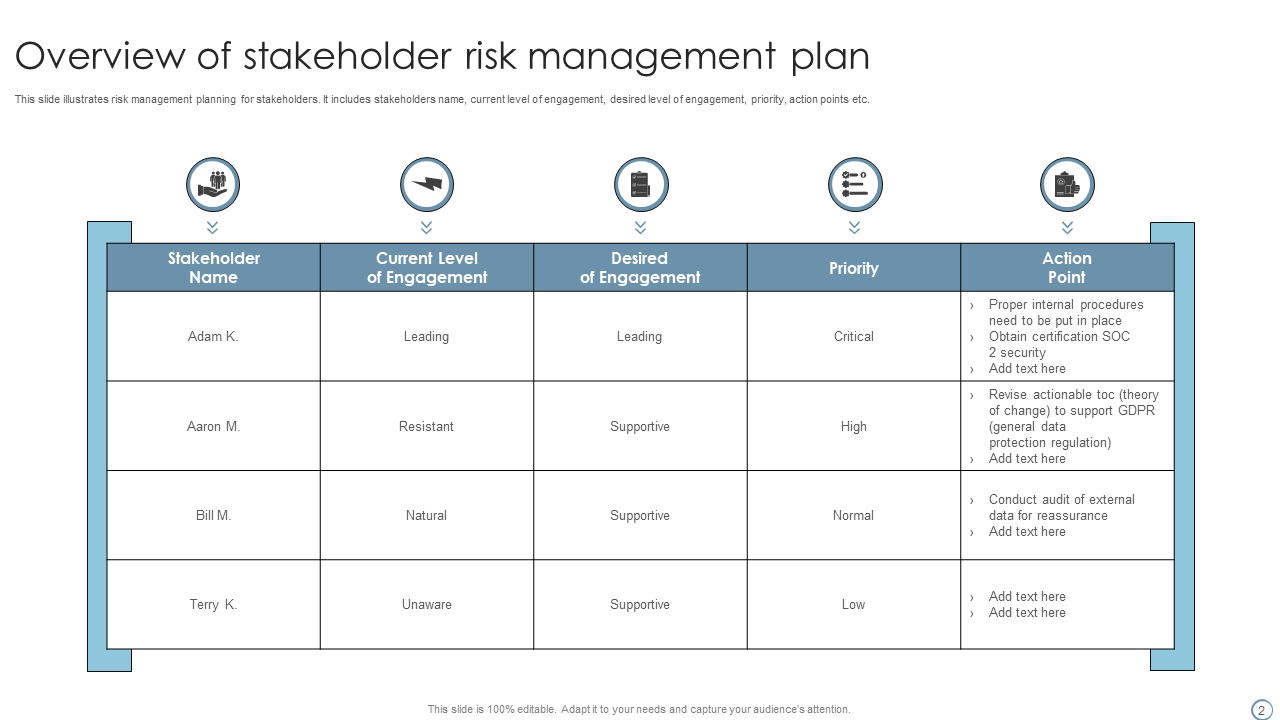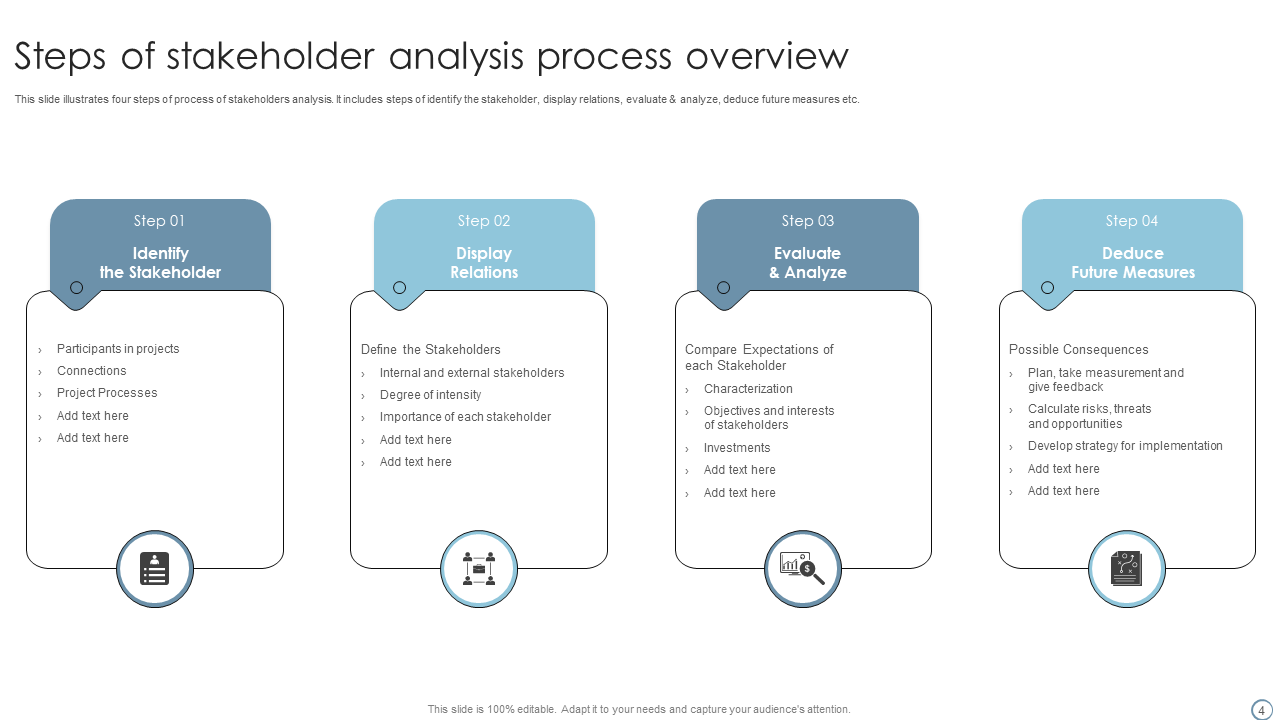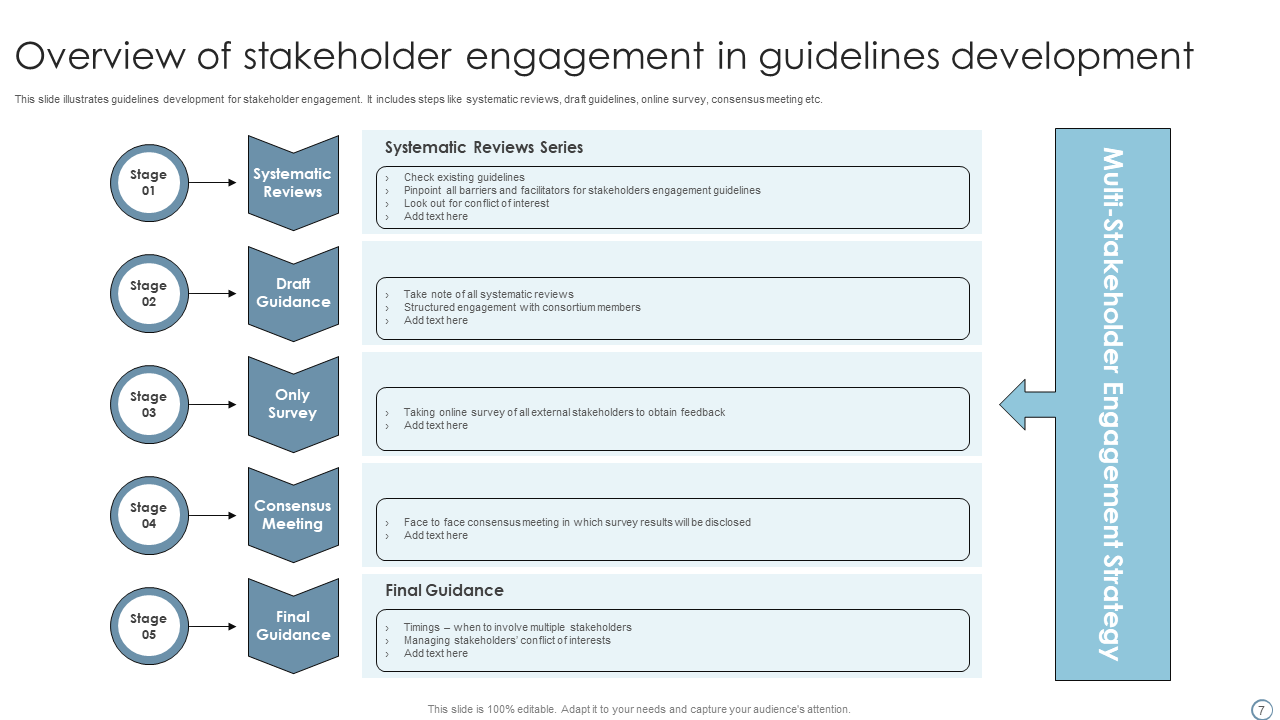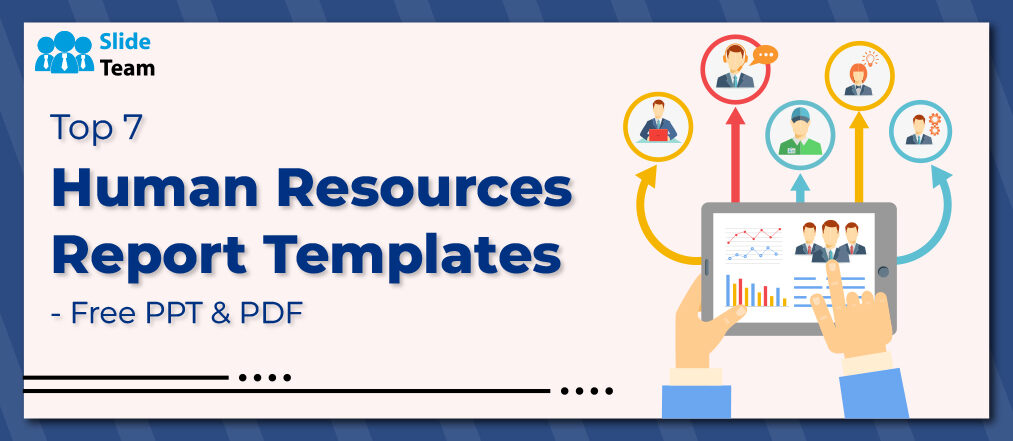When it comes to growth, the one thing that is of paramount value is to introspect. To know all the aspects that the vision holds. To further develop a plan, and have a venture decisively! In the Company too, introspection is natural. However, in the case of an individual, the stakeholder is one, i.e., you, and every aspect related to you, your desires, your goals, and your strengths. But, in the case of the Company, the stakeholders are multiple and are there to guide through. Either to have a consensual decision or in the case of non-consensual, the majority decision. It is the stakeholders that decide the goal of the company, and chalk out a plan.
In today’s corporate world, we all are familiar with the utility of PowerPoint Presentations. It has developed its purpose, where the information is transmitted in the utmost lucid way. And when it comes to PowerPoint Bundles, we the team of SlideTeam are considered highly reliable. To help you further out if you are looking for well-researched PowerPoint Templates for your stakeholder understanding, we are presenting a meticulously crafted catering to all the needs “Stakeholder Overview PowerPoint Template”.
Stakeholder Overview
You must already be familiar with the workings of the company, how it operates, and its effects. The whole scenario can be toned down to the stakeholders making decisions. To brush up on your already-known facts, let’s revise the basic understanding of Stakeholders. Stakeholders are those in layman's terms that have a stake or just an impact on the Company, be it in policy matters, or operational. Stakeholders are always there. The two types of Stakeholders are the External and Internal. Where External Stakeholders comprise the society at large in terms of bio impact, government as in taxes, or the customers in terms of products. The External Stakeholders in other terms could simply be those that are not internal. And what are internal? Internal Stakeholders involve the creditors, the investors, or for that matter a shareholder. It also involves the employee and the management.
As we have discussed earlier, the stakeholders are those that guide the company through, but how do they do so and how do we define it? Don’t worry it is all put in our Presentation entailing the major slides such as:
Cover Slide
The Cover Slide of our well-developed PowerPoint Presentation is a beautiful amalgamation of ideas lucidly showcasing the gist of the title. Based on the blue hue background, the slide imparts a sense of wisdom and caters to the essence of the whole presentation. The suitable font is yet another feature of this well-curated presentation. The appropriate pictures, where a discussion is seen to be conducted amongst the shareholders make the whole template more approachable. You can also add your Company name on the slide, and mark the presentation as your own. All our slides are 100% editable and developed keeping in mind the tiniest details. Get access now!
Overview of Stakeholder Risk Management Plan
This slide illustrates risk management planning for stakeholders. It includes stakeholders' names, current level of engagement, desired level of engagement, priority, action points, etc. It pertains to how in case of any risk the mitigation can be done rapidly. In an example shown Bill M. is also one of the stakeholders, where he is engaged in the policy matters at a natural level, and is available, and approachable. He is highly supportive, and his suggestions can be kept at the normal priority level. The actions taken columns define the way out of their approach, as in the example it shows conduction of external audits for reassurance. As depicted in this example similarly, the data can be maintained keeping in mind the other stakeholders.
Overview of Key Rationales for Stakeholder Assessment
This slide illustrates a summary of key reasons for stakeholder analysis and assessment. The slide is divided into three parts:
- Shaping the Project:
- Take shareholders’ opinions for defining risk criteria.
- Simplify scheduling process.
- Building Trust:
- Consult with stakeholders to find various facets of project creation.
- Staying Ahead of Competition:
- With the support of all the stakeholders, faster plans and decisions can be made.
These three rationales are a must to look up to whenever a stakeholder assessment is being made. It provides a decisive way in which the company should go ahead. All our slides are editable, and provide a space for you to add your views.
Steps of Stakeholder Analysis Process Overview
Now that we are familiar with the idea of key rationales of the stakeholder assessment, or their risk management capability of them. Let’s get ahead with the stakeholder analysis process overview. slide illustrates four steps of the process of stakeholder analysis. It includes:
- Identify the Stakeholder:
- Participants in Projects.
- Project Processes.
- Display Relation (Define the Stakeholders):
- Internal and external stakeholders.
- Degree of intensity.
- Importance of each stakeholder.
- Evaluate and Analyze (Compare expectations of each stakeholder):
- Objectives and interests of stakeholders.
- Deduce Future Measures (Possible Consequences):
- Plan, take measurements, and give feedback.
- Calculate risks, threats, and opportunities.
- Develop a strategy for implementation.
Overview of Stakeholders Assessment Techniques with Application
This slide illustrates techniques of stakeholder assessment and their application. It includes assessment techniques like information boards to establish information boards in every common area, formal meetings to share project information with a group of stakeholders, public meetings to share project information with all stakeholders and particular groups, and the creation of partnerships with local groups, and lastly, one on one interviews dealing with asking their views and opinions, talking with them about contentious and critical topics, and recording of the interviews. This slide is 100% editable. Adapt it to your needs and capture your audience's attention. Get access now!
Overview of Stakeholder Engagement Strategic Framework
This slide illustrates five steps of a stakeholder engagement strategy. It includes:
- Engagement Strategy:
- Set vision and ambition level for future engagement.
- Review post engagement.
- Stakeholder Mapping:
- Define criteria metrics for prioritizing stakeholders.
- Select an engagement mechanism.
- Preparation:
- Focus on a long-term driving approach.
- Engagement:
- Conduct engagements.
- Focus on critical issues.
- Action Plan:
- Pinpoint opportunities from feedback.
- Determine action plan.
- Revisit goals.
Overview of Stakeholder Engagement in Guidelines Development
Our next slide illustrates guidelines development for stakeholder engagement. It includes steps:
- Systematic reviews:
- Check existing guidelines.
- Pinpoint all barriers and facilitators for stakeholders’ engagement guidelines.
- Look out for conflicts of interest.
- Draft guidelines:
- Take note of all systematic reviews.
- Structured engagement with consortium members.
- Online survey:
- Take an online survey of all external stakeholders to obtain feedback.
- Consensus meeting:
- Face-to-face consensus meeting in which survey results will be disclosed.
- Final guidance:
- Timings – when to involve multiple stakeholders.
- Managing stakeholders’ conflicts of interest.
Conclusion
Building a company is not a cake slice; one has to go through many interpersonal relations, which is precisely where the stakeholders come into play. External or Internal stakeholders are an essential aspect of the Company, not only in risk asset management but also in dealing with the different Guidelines to assess the given recommendations. Our carefully developed PowerPoint Presentation deals with all the significant aspects in the utmost lucid manner. Visit our website for more content and get customized templates designed to keep needs in mind! Sign in at https://www.slideteam.net/ and have an enthralling experience. Get access right away!
Click Here to Download Free PPT & PDF!
FAQs
What are the two types of Stakeholders?
The two types of Stakeholders are External and Internal. External stakeholders comprise society regarding bio impact, the government regarding taxes, and customers regarding products. Internal Stakeholders involve creditors, investors, or shareholders. They also consist of employees and management.
What are the Key Rationales for Stakeholder Assessment?
There are three key rationales: shaping the project, building trust, and staying ahead of the competition. The Company's growth drives all three and requires the examination of the stakeholders.
What are the different steps in the stakeholder analysis process overview?
The key steps include identifying the stakeholder, Display Relation (Defining the Stakeholders), Evaluating and Analyzing (Comparing expectations of each stakeholder), and Deduce Future Measures (Possible Consequences).





 Customer Reviews
Customer Reviews

























